Boston Brevet Series 600K: a Crew Member's Report
I awoke with a pounding headache to the sound of a stranger's voice saying my name. A dim motel room. Unmade beds. Early morning light streaming through half-open blinds. A hazy view of unfamiliar mountains. Commotion in the parking lot outside. For a moment I panicked, unable to recall what events could have led up to this. And then it came back to me: I had volunteered for the support crew of the 600K Brevet. I was in Vermont with the New England Randonneurs, and we had just spent the night at the overnight control - which equaled about three hours of sleep. And compared to the riders we had it easy. After a grueling 237 mile day, a few had already abandoned. Those who remained had 136 more miles to go. The sun was coming up, promising another 97 degree day. The air felt heavy and sticky. The clock was ticking.
The 600K brevet is a 373.4 mile ride, which the cyclist has 40 hours to complete. In the sport of randonneuring it is the final and longest of a series of 100K, 200K, 300K, 400K and 600K brevets - designed to prepare the rider for the true challenge of the 1,200K grande randonnée, such as the famous Paris-Brest-Paris. PBP is staged every four years, the latest one having just taken place last summer. The next one will be in 2015.
It was still dark when we pulled up to the start - at the Hanscom Field Airbase just outside Boston. It was 3:45am and the riders were arriving. New England Randonneurs president Bruce Ingle was head of support. He had set up the sign-in table, with his father assisting. Our roles as support crew were clearly explained to us. Steve and I would be responsible for two control points - the first we would staff together with Bruce, the second alone. Other than that, it would be a lot of driving and a lot of waiting. We were given paperwork, supplies, instructions. We watched the riders gather.
Pockets filled with food.
Some had come from as far away as Maine for this brevet.
Finally it was time to set off and Bruce went over the rules.
A total of 11 riders began the 600K. I am told the fairly low turn-out was partly due to this being a post-PBP year, partly to there now being two sets of New England Randonneurs brevet series rides - one out of Boston and the other out of Vermont. The Vermont 600K will be in August for anyone who missed this one.
Once the riders were off, we drove to the first control 45 miles away - at Barre Falls Dam in central Massachusetts, the car now loaded to the brim with extra supplies given to us at the start.
Steve is that type of randonneur who thinks of himself as a casual rider, not by any means an athlete. I listened in awe as he described completing his first brevet series followed by Paris-Brest-Paris in the course of a single summer. "Oh, but I barely made the cutoff!" he explained, as if this served as proof of his "just a regular guy" status. Those sneaky randonneurs. Someone who can pedal 1,200 kilometers in the course of a single ride is not a regular guy in my book.
This control would be open from 6:07 until 8:48am. We discussed the weather forecast for the day and the types of needs and problems riders were likely to have along the way.
The first arrival was rather unexpected. Having lived in New Hampshire and Maine, I have seen moose a couple of times before - but not this close. This fellow (or lady?) appeared out of the blue and just stood there, then casually meandered into the woods.
Shortly after that, they came. At the first control it seemed like nearly everyone got there at the same time.
At mile 45 everything was going well and no one was having difficulty.
We were also given a clipboard with a list of names of all the riders, where we would enter their in/out times at controls. This allowed us to keep track of where everyone was and how they were doing.
The one that Steve and I would staff was quite a ways off, and so we stopped by the others to say hello. The control set-ups were all different and depended on availability of space. The trick was to set them up next to convenience stores with bathroom amenities. The availability of coffee and ice was a plus.
Some controls were rigged up using open trunks of cars. Others had the luxury of grassy lawns, where they set up tables and umbrellas. Regardless, there was always food, water, a first aid kit, and other supplies available to the riders.
Driving to our control we followed the brevet course, which gave us a good feel for the terrain. Navigation was tricky at times. We used Steve's GPS unit for turn-by-turn directions and the map on my phone for panned out views of the route. When reception was problematic we also made use of the cue sheets. The route took us west all the way across Massachusetts and into New York state. Our own check point would be to the north, on the border with Vermont, right after a difficult climb over a mountain pass. As the day wore on, the temperature and humidity climbed. When it reached 90, we closed the windows and turned on the air conditioning. After an hour in the car I grew unbearably drowsy and used all my energy to stay awake. I felt guilty as I imagined how the cyclists must be feeling around this time. Now and again we passed riders. No longer in one bunch, they were strung out in pairs and singles.
We reached our second control in early afternoon - a rural convenience store with late opening hours. Next to it there was also a pizza place, a sandwich shop and another, 24 hour convenience store. We had permission to set up outside of the non-24 hour store, but not any of the other businesses. Problem was, there was nowhere to set up. The parking lot was crowded and rowdy, with constant motor vehicle movement. There was no safe spot. We would be at this control point for a while - from 2:08pm until 2:24 in the morning, and riders stopping here would likely be exhausted and in need of as many supplies as we could lay out, as well as a quiet, shaded spot to rest.
With a long evening ahead of us, Steve and I took turns napping. As I sat awake drinking coffee, I received the first phone call from Bruce, letting us know a rider had abandoned the course. I crossed his name off the roster and we would not expect him at the control. An hour later came a call about a second rider abandoning. The 4 mile 7-8% grade ascent along Petersburg Pass in what was now nearly 100 degree heat and humidity was proving too much even for the experienced randonneurs. It was going to be a tough stretch for them all.
After the lead rider's departure, things were quiet again, save for a small adventure with local police. The manager of the neighbouring convenience store did not like us sitting on the lawn between the two stores and sent the officers to talk to us. The police were nice about it, but we had to move closer to "our" store. Thankfully at this point it had grown dark and the traffic activity in the parking lot subsided. Steve moved his car to a corner spot visible from the road and we set up our supplies alongside. It was not as pleasant here as it had been in our previous spot, but at least the sun had set and there were few other cars around. We continued to wait for riders as the hours passed.
It was after 11pm when they arrived - 4 young riders in close procession. They looked terrible and wonderful at the same time. Glazed-over eyes, drenched in sweat, their movements jerky.
But there was also a delirious excitement about them that was contagious and inspiring.
We plied the disoriented riders with sandwiches, bananas, watermelon. We had to direct them a bit. "Here, why don't you get some water first." "Oh right, good idea."
We were excited for this group having made it this far. Now it was only 30 more miles to the overnight control. At this stage there was plenty of opportunity for them to get some decent sleep before making good time the following morning.
Our supplies were more than sufficient to accommodate everyone. Steve bought some ice at the store to keep the perishable food fresh in the cooler. It is not easy to provide fresh food at controls, but the cooler allowed us to stock cold cuts and tomato juice.
Despite their visible exhaustion, the riders were in a fine mood. I have experienced people behaving tantrumy in similar circumstances and was fully prepared for that, but there was none of it on this brevet. Smiling, small talk, asking about how the others were doing. A class act. Having rested a bit, the guys got back on their bikes and disappeared into the night.
Shortly before midnight the convenience store shut off their outside lights. In the dark we waited for the others. With two of the 11 riders having abandoned and 5 having just come and gone, we were still expecting 4 more to come through. Just after midnight I received another phone call that reduced that number to two. And then nothing. After 1am I began to worry. The riders had a contact number to call in case of emergency, but what if their phones had run out of batteries or they could not get reception? With the control only open for another hour, I hoped they weren't in trouble. Steve and I stood in the middle of the dark country road watching for headlights in the distance. "I think I can see them! ...No, false alarm." Shortly before 2am we finally did see a real headlight - just one. The lanky gentleman dismounted his double-top tube bike with trembling limbs as sweat poured off him in streams. He was fine, but his friend had stayed behind - sick and unable to continue after having crossed the mountain pass. Was there any chance we could pick him up in the car? Arranging for his own ride would mean a 3 hour wait in the dark.
Our duties technically done, we headed back from Vermont at 7:30 on Sunday morning. We planned to stop at the finish and watch the first riders arrive. The drive back was exhausting and I could not keep awake. I felt hungover and somewhat deflated. And for the first time, I started to imagine myself doing the course in the future. It was a weak feeling, prompted possibly by guilt at being so tired when I wasn't even riding. But until then, I did not think I was at all interested in doing a ride like this myself. Now the sentiment had changed to maybe.
On the way back to Boston, we stopped at another control to conduct a bag exchange. The timing of this is something I still don't entirely understand, but basically riders can leave things at the start and at certain controls to retrieve them later.
Here we also saw Matt - feverish with exhaustion, his eyes aglow and his hands shaking. In between sandwich bites, he was lucid enough to tell me about the beautiful French bike he was riding. Matt works for Bikes Not Bombs and refurbished the vintage machine himself. This was his first attempt at a 600K brevet. It was clear to me then that he would finish. He had to.
By mid-morning we crossed back into Massachusetts and at length arrived at the finish - back at Hanscom Field Airbase. How different it all looked in the mid-day sun.
The rider whom we'd picked up overnight had hitched a ride in one of the larger support vehicles and was feeling much better.
Melinda Lyons was also there. An experienced and distinguished randonneur, she was among the riders who'd abandoned the previous day. As Melinda put it, her status was NHF: not having fun. Somewhere along the Petersburg Pass, she determined the heat was too much for her in a year when she was really doing the brevet just for the heck of it. Having found a motel room on her own, she got some sleep and cycled back in the morning.
My small role in the brevet helped me understand how these events work, and, moreover, how much time and effort go into organising them. Mapping out the routes, recruiting and coordinating the support crew, arranging for car-pools, establishing control points, sourcing food and supplies, keeping the lines of communication open, keeping track of the riders - these things are crucial in ensuring a safe and positive experience for brevet participants. Perhaps some day I will take part in a sanctioned randonneuring event, perhaps not. I don't know whether I have what it takes - not only to make it physically, but to maintain composure and a positive disposition throughout, the way these lovely people did. Either way, I'd like to help out again when my schedule allows. These events need support volunteers, and anyone interested can contact their local randonneuring organisation for information.

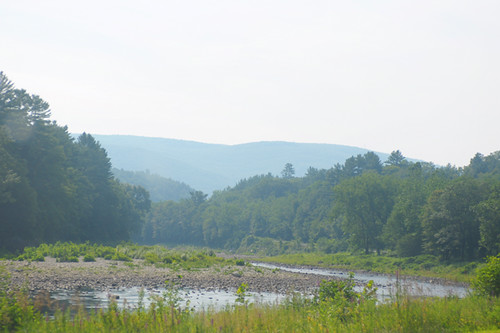
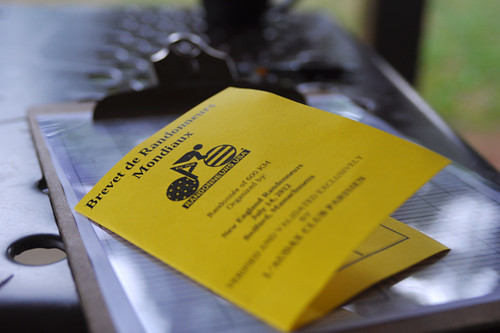
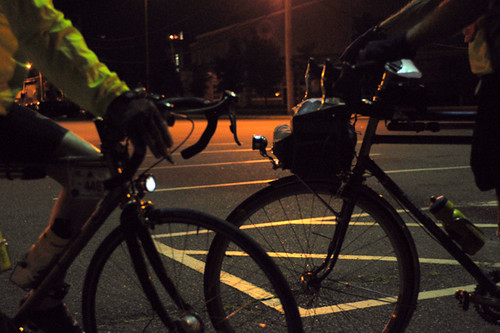

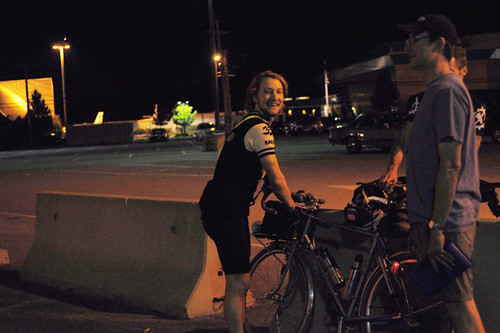
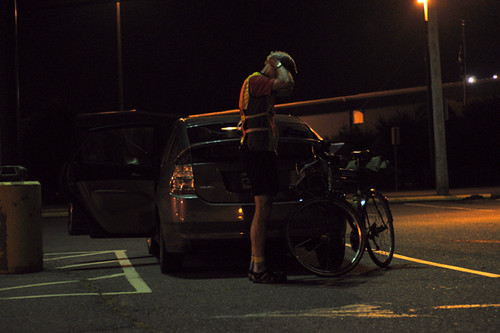

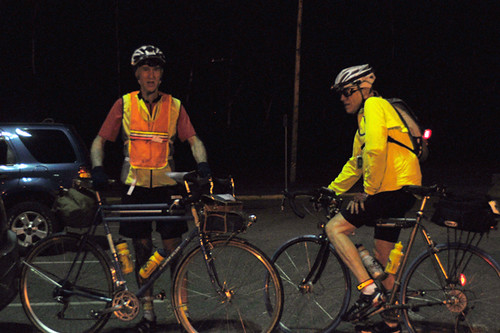
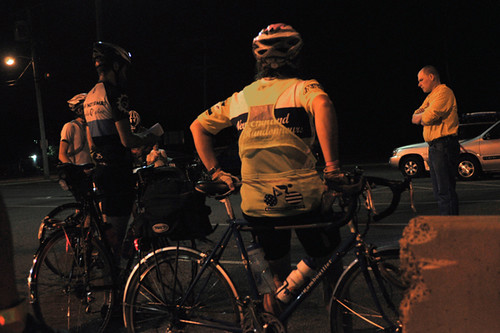
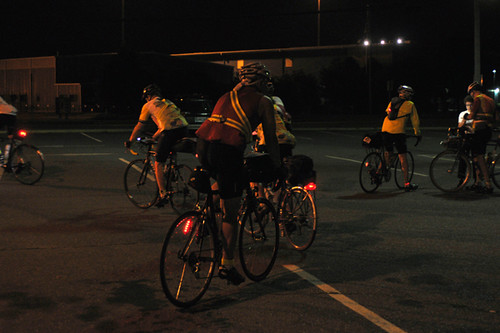


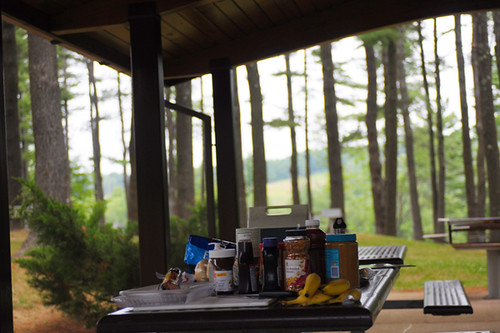
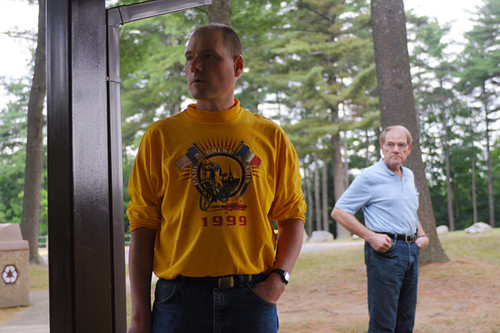
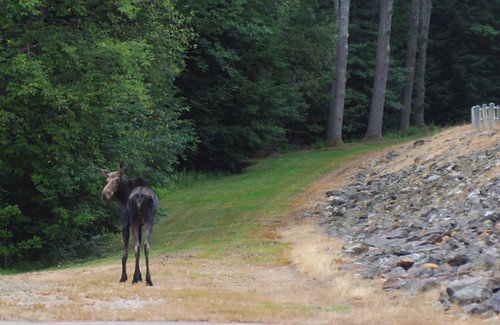
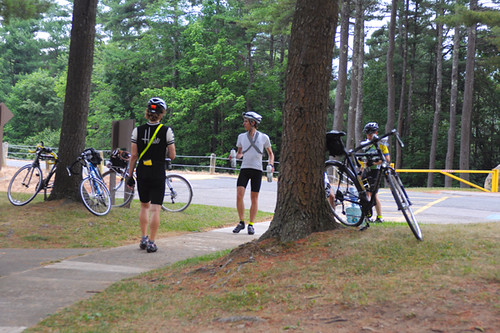
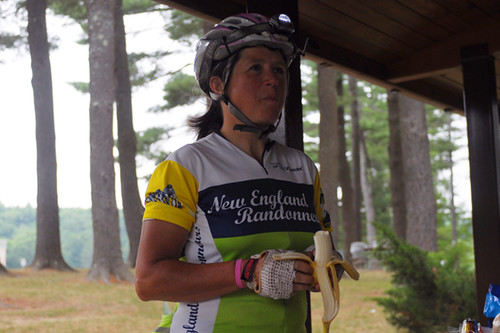
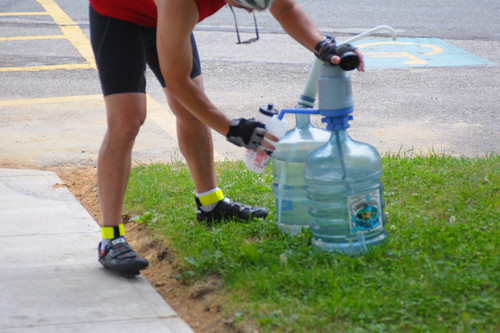
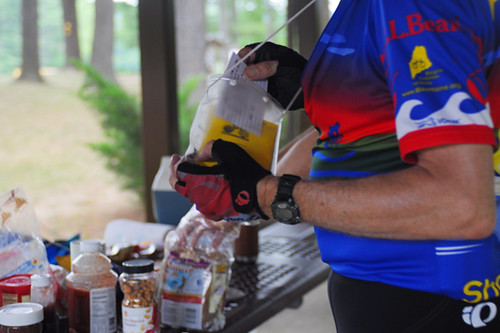
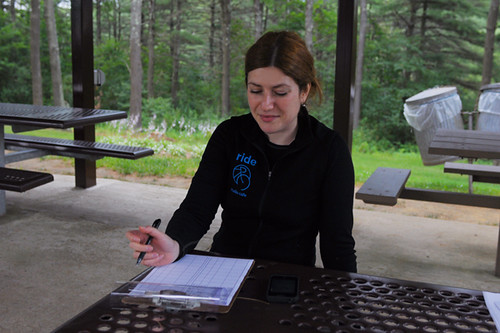



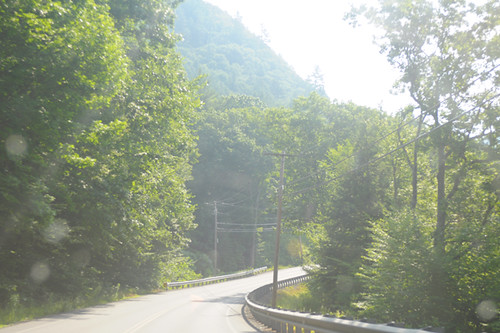
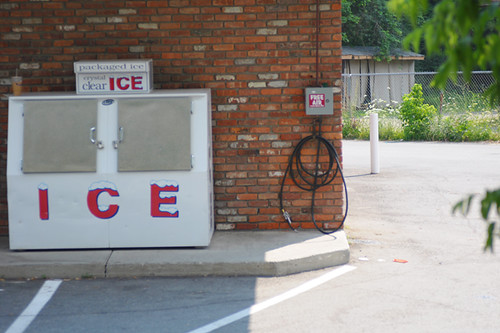
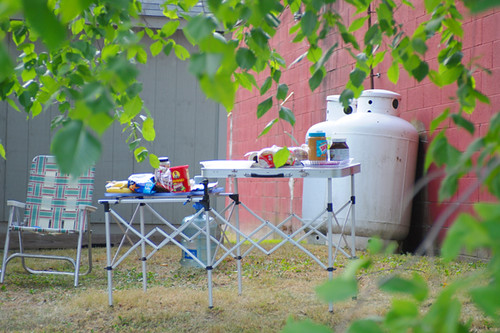


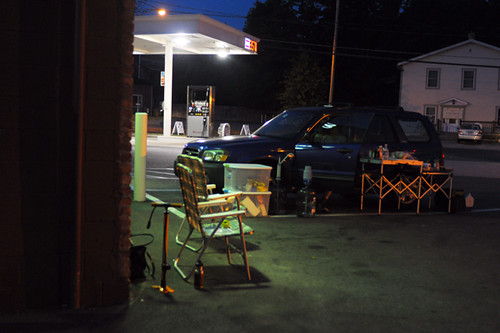
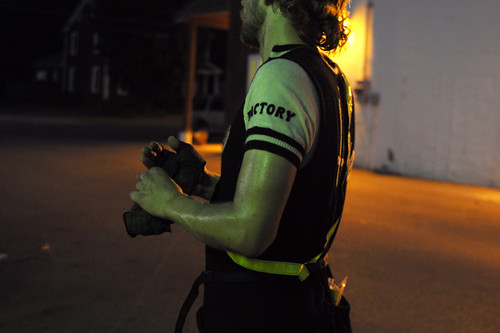
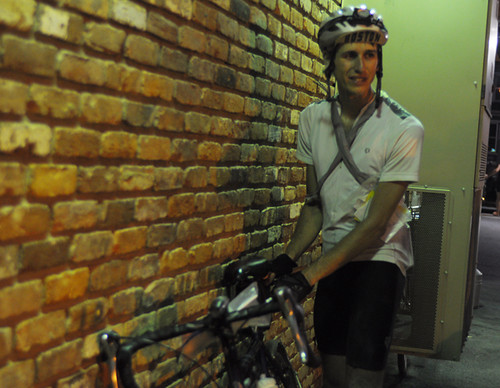
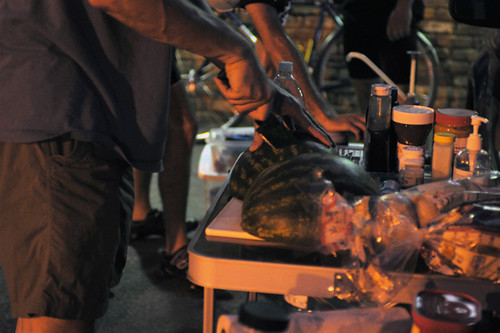

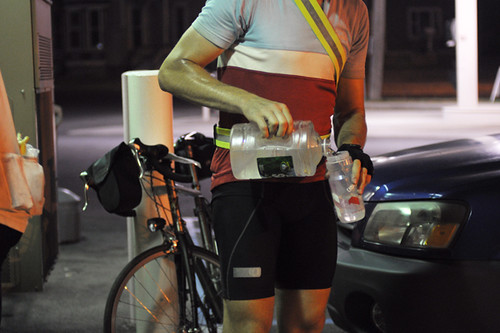

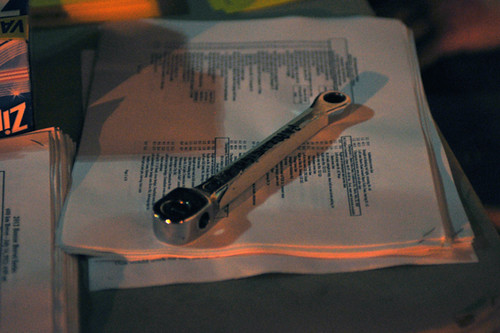

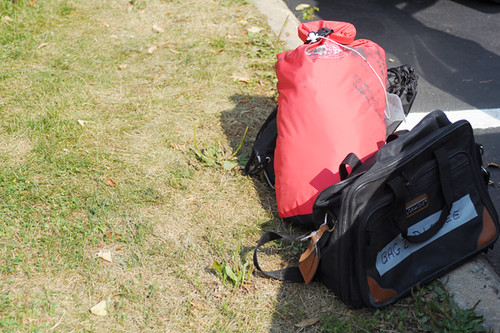
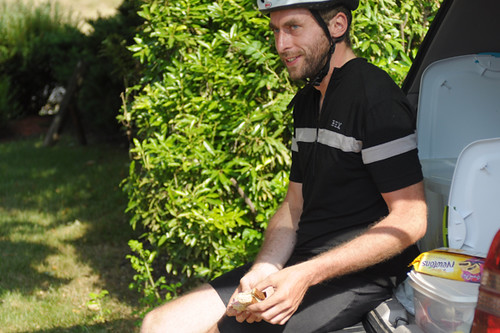

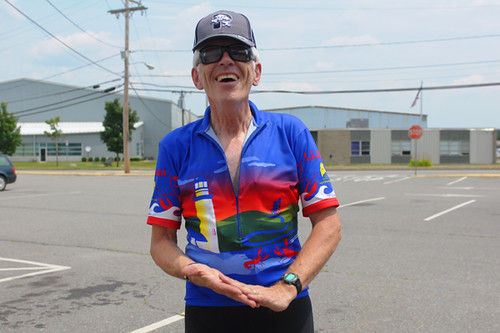
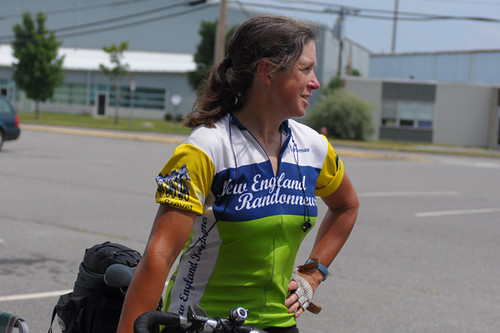

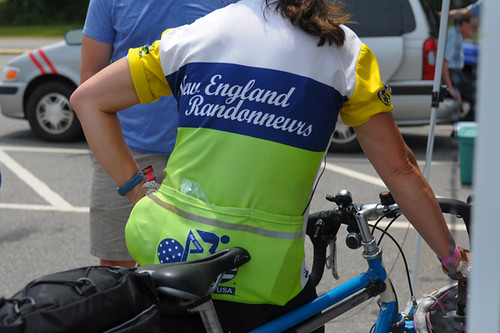
Man, that looks crazy hard! I was just looking through Cycle Oregon 2012 Weekend on Flickr and think I like the pace and camaraderie of that scene...more relaxed and more beer :) But kudos to those folks who challenge themselves with this unique endeavor...Wow.
ReplyDeleteNot be all snotty and stuff, but it seems like a lot of fuss and trouble to go to for some bike rides. I gather that's the point? Process?
ReplyDeleteNot any more trouble than people go through to run in marathons or drive cars in races, etc.
DeleteA meaningful event requires meaningful organization.
Not for everyone - me included - but perfectly rational set up.
We do it for the same reason we go through the trouble of coordinating meal times, preparing food, setting a table, and washing dishes even though we can eat without any of that fuss.
DeleteI like parsimony especially when it comes to rides.That ethic and psychological configuration isn't for everyone.I understand. I hope that all the smart introverts out there can keep that in mind and venture.
DeleteFrom one introvert to another responding to your last sentence I wholeheartedly say I agree and do.
DeleteThat said, I fully respect what the more social humans are doing here and enjoyed LB's account.
Ironically, I think that randonneuring attracts mostly the type of persons you are describing: self-sufficient and introverted humans, being self-sufficient and introverted together(ish). It's one of those things that makes the whole thing so weird and unique.
DeleteHuh???
DeleteSome people go bowling. Some people collect ... beanie babies. Some people build hot rods, or boats. Some people walk the Adirondack Trail.
Some people won't understand doing any of those things. Takes all kinds.
Very nice write-up from the support perspective. Having both ridden and supported these types of rides, I can say it is much easier to RIDE, and much, much easier to stay awake if riding. Thanks so much for volunteering. It sounds as though we may see you riding one of these soon!
ReplyDeleteWow, so much detail. Excellent report.
ReplyDeleteQuestions: what the heck is the guy in the white jersey wearing criss-crossed...don't tell me it's a tubie...
No picture of the gorgeous French bike!
Mostly congrats on volunteering for this. Being the supporter after having been supported is a good feeling and can be more difficult than riding in, say, charity events.
A tubular would be crossed over the back, not in front.
DeleteI'm glad you asked. I was wondering the same thing and thought maybe I just didn't recognize something that's actually common since I don't myself wear much roadie gear.
DeleteI had wondered too. It's a DIY sash made of reflective ribbon!
DeleteThis is the French bike.
C'est jolie ça. Ribbon too.
DeleteThat bike floored and inspired me when I saw it in your Flickr feed. It's very well done.
DeleteAnd the sash is a good idea for this type of riding.
Very nice! I volunteered on this ride a few years ago, and working a brevet is as exhausting as riding one.
ReplyDeleteIt has indeed been a quiet year. The Westfield (MA) 400k had four starters (and four finishers); the Westfield 600k had eight starters and six finishers.
Lovely account, it really gave a sense of the event. Congratulations to everyone who participated!
ReplyDeleteOut of curiosity, how many women rode the brevet?
ReplyDeleteJust one in this one.
DeleteLike the hard boiled, Raymond Chandler/Phillip Marlowe noir opening. No cigarette? Enjoyable, fun post as always not to mention instructive. Jim Duncan
ReplyDeleteTo say all of this started with the innocent purchase of a loop frame... :)
ReplyDeleteActually it started with a stranger in Vienna putting ideas in my head. But I will save that for another post.
DeleteI know a little of the proud history of randonneuring, that it is as old an event or older than the grand tour races. But those are "stage" races. The riders all ride a set distance each day and sometimes take alternative transport to the start of the next stage. Much as one might do cycle-touring. Strangely, randonneuring, which seems more related to touring, is in fact a sort of ultra-marathon. And as they used to say of the Race Across America, it becomes a sleep deprivation derby. Regardless, obviously great and dedicated riders to be admired.
ReplyDeletecan't believe you saw a moose, that is awesome!
ReplyDelete" feverish with exhaustion, his eyes aglow and his hands shaking. "
ReplyDeleteIf golf is a good walk spoiled, this is surely the equivalent for a nice bike ride in the country.
Don't feel bad that you were tired. It is incredibly difficult to sit around and wait for hours on little sleep, more so than being active. I hope you give the brevets a try next year! I loved your Diringo Dynamo ride report!
ReplyDeleteThe progression of the photos from night to day to night to day gives an excellent feel for the event unfolding. The narrative is novel-quality at times. I know you can't write posts like this every day, but I am glad when you do. I hope you don't take that as a backhanded compliment, I just really enjoyed this and want to read more like it!
ReplyDeleteGarry
Oh yes, encourage her to poeticize a dangerous sport.
DeleteVelouria, I for one prefer your reviews and lighthearted posts. This is a blog, NOT a novel, and that is precisely why I like it.
Ha. I think it's pretty hard to confuse my posts with novels or literature of any kind, regardless of whether they are ride reports or product reviews.
DeleteStatistically speaking, I doubt that randonneuring qualifies as a dangerous sport. My riding for transportation on a daily basis is probably more risky.
I've only started riding brevets this year (147 Populaire, 200 and 300 km brevets) and I'm wondering if the amount of preparation and services offered are specific to the 600k or if similar provisions are made on shorter rides, too. Or is this a specific NE Randonneur thing? In the brevets I have ridden the only volunteer involved on the day of the event is our club president -- and he always is doing the ride himself, too. Controles are at gas stations or convenience stores along the route and that's it. I must say that I like this minimalist approach.
ReplyDeleteMy understanding is that it's organisation-specific. I hear that the NERs historically have always had pretty good support.
DeleteI have never done a supported ride, so cannot speak comparatively. But on the overnight ride to Maine I enjoyed the awareness that there was no support and we were on our own. I also think that this influences the dynamic of the group you're riding with.
There are a (very) few regions in the country that provide this level of support. Most other regions keep it simple - and it's certainly my preference to keep it simple, partly to eliminate the need for so many non-riding volunteers, and partly to prepare riders for being self-sufficient when they do other rides. Most regions have (non ride-staffed) convenience store controls where riders purchase something and either get the card signed by the clerk, or keep the receipt.
DeleteIt's hard enough to get volunteers to man a control. And one can get the sense that it's a bit tedious to hang out for 12 hours in the hot sun waiting for riders to trickle thru. And while I'm sure all these riders appreciated the efforts and said thank you to all the volunteers, it really isn't necessary.
Manned controls are useful when there is a desolate stretch of road with no services, or maybe for a designated overnight stop, like one might have on a 600km or longer event.
If there is a convenience store, I see no need to set up a control right beside it, offering riders food and water outside while encouraging them to go in and use the toilets. This is not a criticism of V or the other volunteers who set up the controls where the organizer told them to. But I can certainly understand why the operator of a store might be annoyed.
The long running Berkshire series and the newer Vermont series are both run in a much lower key manner, with more minimally staffed controls. Having done many of the Berkshire rides over the years, I can say that Don Podolski has done an excellent job working with the local merchants who serve as controls and they are always quite happy to welcome us, sign our cards, serve us food and let us use their facilities. In some cases, he even provides vouchers (from the entry fee) that he has worked out in advance with the merchants.
It also keeps the DNF rate low, which is a RUSA goal. It's long been established that folks are less likely to drop out if they have to get home on their own!
Again, this is not a criticism of V and the other fine folks who sacrificed their weekend to do this.
Pamela, personally I agree with you on much of this. But I wonder whether knowing there is a history of support may encourage more people to ride who would be reluctant to otherwise? Maybe it's not even about the availability of food and supplies, but just the idea of someone you know waiting for you at controls. I don't know of course, just speculating. Hmm looks like I really need to experience one of these rides from the cyclist's perspective!
DeleteThanks for the explanations, Velouria and Pamela. The "food and drink" right next to a convenience store struck me as weird/rude, too.
DeleteWe bought things from the convenience store repeatedly. That was not an issue.
DeleteThe point about beginning riders feeling more of a need to be supported is true, in my experience.
DeleteBut since they're beginners the rando format isn't all that appealing in that the nature of the event, self-sufficient long distance travel, is HARD.
The allure of sashes, lights and controls aside, most people who aren't obsessed with this kind of riding do your normal metric or standard century whose tables are overflowing with bounty. The only downside is high entrance fees. And lots of weaving, tired riders.
Wonderful story. Great photos as always.
ReplyDeleteWouldn't want to kill the romantic buzz here but someone should make some remark about how dangerous this event could have been. Temperatures in the 90s is serious business. One hundred degrees on a climb is possible but not something to attempt lightly. I've done support work on RAAM qualifiers and seen smart riders make astonishingly bad decisions when dehydration begins. And that's when everyone has a crew handing them bottles and urging them to drink. Alone on a country road at night and needing many bottles every hour to keep your brain functioning is a sketchy place to be. If you're about to die and your brain is functional you bang on a farmhouse door but that can't be general practice.
Melinda Lyons gets maximum credit for knowing when to stop. I suspect this event came off without problems because the riders were all quite bright. Again, I've seen bright riders turn to mush for brains in a very short time. Extreme heat is dangerous.
Anybody who participated or finished is amazing. In that weather eleven is a good turnout.
The way I see it, it all comes down to personal responsibility. Even the best-supported ride in the world does not absolve us from it. Part of being an adult is knowing where our weaknesses and limits lie, knowing the difference between feeling challenged and being on the brink of harming ourselves. Heat is just one of many examples of stuff that can be very dangerous if we don't deal with it properly. I agree that being smart about these things is crucial to taking part in long brevets.
DeleteNobody enters a 600K brevet without a very good idea of what they're doing. Even if it's their first 600, they've already done a lot of brevet riding. Randonneurs are generally a very robust, mature and sensible lot who aren't at all reckless, in my experience. The sport as a whole has a very safe record compared to any other outdoor activity with which one might compare it.
DeleteGreat write up Velouria. If I follow your pictures and story correctly, the calm, collected, lead rider who appeared fresh as a cucumber after the event was riding a lightweight carbon fiber bike, narrow tires, no front bag, and no fenders. Do you think Ernie would have been a happier rider if his bike had been 10-15 pounds heavier, he rode much fatter tires, and he pushed a large handlebar bag into the wind all day? Just emphasizes again that there are lots of bikes you can ride very successfully on a brevet (including bikes that look nothing like those touted in Bicycle Quarterly).
ReplyDelete^Let the record show it was not me who wrote this.
DeleteThe more randonees I ride, the more I realize that type (especially weight) of the bike is probably the least important factor in randonneuring success. Conditioning, experience, sufficient food and drink (and a stomach trained to be unfussy), a comfortable position on the bike, the right clothing choices, well organized and tested accessories and baggage, and a smattering or determination and motivation are all much, much more important. Sometimes it seems all everyone on websites and forums wants to talk about is some mythical notion of the perfect randonneuring bike, but it really doesn't matter much.
DeleteThe lead rider was on a Specialized Roubaix CF bike. The next rider to finish was riding a 30lb steel bike with handlebar bag and bars higher than saddle level. And while the lead rider was motivated to go for a fast finishing time (I believe he was training for RAAM?), the second rider was just having fun and not aiming for anything in particular. That sort of thing matters. Also, if we're going to examine the lead rider's equipment, let me also note that 2 of the DNFs were riding lightweight CF bikes. Maybe they would have finished if they were riding steel because they would have been more comfortable? My point is that it's all speculative. The guy is riding CF and finishes first, so you suggest it's because of the bike. If the guy had been riding steel, you might have said it was *despite* bike. That just means it's pointless to attempt to use specific persons' performances as evidence.
DeleteMy suspicion is that on these long tough rides, every cyclist needs to achieve a balance between hypothetical speed and comfort - so as to maximise their actual speed. For some this translates to riding steel even though it might hypothetically be slower. For others it might mean a relaxed geometry that is technically not as efficient. Who knows. Bottom line is that the goal is to achieve a balance that maximises that specific person's performance in the long run.
This is it. Some guys I've ridden with/used to race against simply do not feel pain, do not get uncomfortable. They just will themselves to what they want to do.
DeleteThe old saw is comfort = speed, speed = comfort. Of course it's wrong, but...
I think those that ride steel would be pleasantly surprised by how fresh they'd feel after riding instead a Roubaix, though like I said feelings of fatigue are subjective.
The opposite, say someone who feels fatigue earlier/easier, who rides a Roubaix and trades for steel, may feel more fatigue.
Subjective questions about ride quality, aesthetics and "feel" notwithstanding.
Eh, it probably wouldn't matter. A similarly outfitted CF frame and steel frame wouldn't weight more than about 2-3 pounds differently, and that's pretty close to noise.
DeleteThe extra stuff is what makes a bike heavy. Drop on a handlebar bag to carry goodies and a couple of extra layers; that's two pounds (5 if you're into the whole historical reenactment thing and buy/sew a canvas bag) plus however much your additional layers and food weigh. Fenders are a couple of pounds, too, and two or three full water bottles cheerfully add on the weight. Add in lighting and batteries or a generator hub and there go a couple more pounds, and I'm sure that the list goes on.
But a handlebar bag is nice for carrying food and additional clothing. Water bottles are good if you're not a fan of heat exhaustion or collapsing from dehydration. Lights are good if you want to be visible at night (plus they're the law) and fenders are amazingly useful if it's raining.
(And I'm not really sure how much extra wind resistance a handlebar bag actually is, given that the bicycle operator is usually at least as wide as the bag and churning through the air. I suspect that a handlebar bag would act as a bit of a fairing and reduce the wind resistance a little bit, particularly if it has a loaded front pocket that makes the leading edge less square.
My current summer read is a well written book on the history of Carthage. The author argues convincingly that at the start of the 3rd Punic War (which ended in Carthage's total destruction), Rome was so much more powerful than Carthage that even by the ethics of the time the war was completely unjustifiable.
DeleteBQ, which has in fact written positive articles about CF bikes, argues that properly designed and equipped steel bikes can be a viable alternative to many. As it happens, these bikes are available only in tiny quantities from cottage operations, many of whom are barely making a decent living.
CF bikes on the other hand are manufactured in huge quantities by publicly traded well off companies. CF bikes totally dominate the road racing portion of the industry.
Nevertheless, CF fans apparently feel so threatened by BQ they cannot let any opportunity to attack pass by.
Human nature I guess. It's not good enough to be the leader. All behind the leader must extend their unequivocal love, respect and honor and never question that the leader's ways are the best.
Thanks Velouria for putting things in perspective.
I agree...It's not about the bike, it's about the engine.
ReplyDeleteExactly.
DeleteAnyone interested might spend some time looking at the distance marks Sir Hubert Opperman set back in the 1930s. Riding his 1930s Raleigh Record Ace. If Sir Hubert entered a distance competition today on his old bicycle he would simply walk away from the field. In most cases if he had to ride his 1930s bike on 1930s roads while the moderns were privileged to ride modern roads he would still walk away from the competition.
For those riding at lower speeds and not competing all you need is a bike that works. A bike that continues to "work" for 600km is probably more than just an ordinary bike and pride of ownership and all that matter. Many things we obsess over do not.
"The guy is riding CF and finishes first, so you suggest it's because of the bike."
ReplyDeleteNo, what I actually concluded was
"there are lots of bikes you can ride very successfully on a brevet"
One of the things I liked about your posts was it showed how much variety there is among the bikes and equipment choices of talented long distance riders. I think Jan Heine has picked the kind of bike he likes to ride, but so has Ernie. Their choices are very different, and I hope that encourages other riders to also find whatever works best for them.
Sorry, I was using a general "you."
DeleteI agree with your conclusion.
Nice reading. Having done a 600 last year on tandem in Denmark, we could recognice a lot ourselves. We just like to ride about 330 km at most - above that it becomes to hard for us. This year we will try some 200 km and next year will be about our missing international 300 km ( there is a game about getting a 200, 300, 400 & 600 from 4 different countries: the international superrandonneur grade).
ReplyDeleteThank you for this post. As a casual recreational rider, I've wondered what radonneuring was really like; ironically, this account of your time as a volunteer is so thorough and detailed -- and gritty -- that I think I've got it now.
ReplyDeleteThank you for a great post. And thank you for volunteering! The sport needs volunteers to survive, and your sacrifice is greatly appreciated by all of us who like to ride these challenging events.
ReplyDeletePS I always enjoy reading your blog. Thank you.
This was a very well written, detailed post and very helpful for me as a potential future Brevet rider. I now have a much better sense of what to expect, easing many uncertainties. Thanks!
ReplyDeleteHi...I am from India..I am a Randonneur...My name is Mithun...was reading through this write-up from a Volunteer's side...I have completed a 600k brevet and we all riders appreciate the Volunteers giving their time and enthusiasm for us ...without volunteers Randonneuring is difficult...many a times the volunteers enthusiasm lifts our spirits and makes us forget our sore backs and legs...also you meet people from different spheres of life...Randonneuring is an adventure...!!!
ReplyDelete